Linen Things to Know
Inside...
What is Linen fabric?
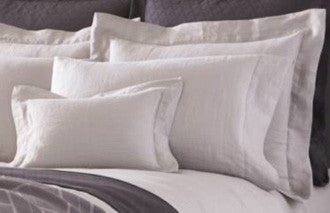 Linen is a textile made from the fibers of the flax plant and is one of the oldest textile fibers known to man. Because of its durability and absorbency qualities, linen it has long been a favorite for summer clothing, sheeting, table linens, and toweling. Highly absorbent and a good conductor of heat, linen fabric feels cool to the touch. Linen is 2 to 3 times stronger than cotton. It is smooth, making the finished fabric lint free, and gets softer the more it is washed. Linen is relatively easy to take care of since it resists dirt and stains and has no lint or pilling tendency.
Linen is a textile made from the fibers of the flax plant and is one of the oldest textile fibers known to man. Because of its durability and absorbency qualities, linen it has long been a favorite for summer clothing, sheeting, table linens, and toweling. Highly absorbent and a good conductor of heat, linen fabric feels cool to the touch. Linen is 2 to 3 times stronger than cotton. It is smooth, making the finished fabric lint free, and gets softer the more it is washed. Linen is relatively easy to take care of since it resists dirt and stains and has no lint or pilling tendency.
What should I know about Egyptian cotton?
As the term implies, "Egyptian cotton" is used to describe cotton grown in Egypt. The fertile Nile River valley of Egypt has long been considered the most desirable setting for growing the finest cotton in the world. It has the perfect climate to produce cotton with extra-long fibers; the valley is sufficiently humid and the soil is rich in nutrients. This reputation is precisely what makes the term “Egyptian cotton” so meaningful to consumers.
It is important to recognize that Egypt grows a variety of different types of cotton, which are categorized by the length of the cotton fiber (known as staple.) There is Extra-Long Staple (ELS), Long-Staple (LS), and regular cotton, and there are significant differences between these varieties.
The ELS fibers allow the cotton to be spun into much finer, softer, and stronger yarns. And fabric woven with ELS cotton is more breathable, providing greater comfort. It also produces less lint and has less of a tendency to pill. And as an added bonus, it becomes softer with every laundering.
Unfortunately, most products labeled "Egyptian cotton" are not made with ELS cotton yarns. Only a small percentage of the Egyptian cotton production is ELS, and within the ELS category, the finest varietals are not being grown in any significant quantities. Therefore, it is best to be somewhat wary when “Egyptian cotton” is listed as the fiber content.
During 2011, China, India, and the United States collectively produced over 75 million bales (480-pounds) of cotton. In contrast, Egypt produced just fewer than 750,000 bales, less than 1% of the production of the top three cotton-producing countries.
The good (and most important) news here is that SFERRA uses only superior-quality ELS Egyptian cotton in weaving its Italian-made luxury bedding collections. When you consider that Egyptian cotton makes up such a minute share of the worldwide cotton production, and less than 20% of Egyptian cotton is ELS, and only a small percentage of ELS is actually the varieties with superior quality, SFERRA's luxury linens can be seen in their proper context.
As you may already know, SFERRA Giza 45 is woven with the highest quality level of ELS Egyptian cotton, Giza 45, which represents less than one half of one percent of all of the cotton exported from Egypt. SFERRA is the only manufacturer of luxury sheets that uses this yarn, the world’s finest.
What is the proper format for a monogram?

A monogram is an ornate design formed by the combination of letters, usually the initials of an individual or couple, used to decorate or identify an object. Many of our customers opt to monogram their bed, bath, and table linens, as well as throws and other gift items.
A traditional three-letter monogram for an individual has the initial of the individual's surname (or last name) set larger in the center, with the individual’s first name initial to the left of it and the middle name initial the right of it. For example, the monogram for John Paul Smith would read: JSP.
Modern convention calls for a married couple to create a three-letter monogram using the initial of their shared surname set larger in the center, with the wife’s first name initial to the left of it and the husband’s first name initial the right of it. For example, if Mary Brown married John Smith, their monogram would read: MSJ.
Some references say that for married couples, the husband's first name initial comes first. It is really a matter of personal preference, so the easiest thing to do is to leave it up to the customer.
Old school custom, as espoused by Amy Vanderbilt’s Complete Book of Etiquette, would have the linens “marked with the married initials of the mistress of the house.” This three-letter monogram has the initial of the woman's married surname set larger in the center, with her first name initial to the left of it and her maiden name initial to the right of it. For example, if Mary Brown married John Smith, their monogram would read: MSB.
There is an option to have all the initials the same size (the center initial is not larger.) These monograms do not follow the format described above for location of the surname initial. If all initials are the same size, then they are simply listed in order with the surname initial placed at the end. For example, John Paul Smith would read “JPS,” and Mary and John Smith would read “MJS.”
Where does polka dot get its name?
A polka dot pattern consists of an array of filled circles, generally sized equally and spaced relatively close together. Polka dots come in a wide variety of color combinations and sizes. The pattern is definitely less formal and is usually intended to be more playful in nature.
 Polka dots first became common on clothing in the late 1900s in the United Kingdom. Even though, polka dots are not closely related, it is thought that the pattern is named for the polka, a Central European Dance that was all the rage at the time. Many other products and fashions of that era also adopted the polka name. But only the polka dot pattern remained popular, and the name has been left intact over the years.
Polka dots first became common on clothing in the late 1900s in the United Kingdom. Even though, polka dots are not closely related, it is thought that the pattern is named for the polka, a Central European Dance that was all the rage at the time. Many other products and fashions of that era also adopted the polka name. But only the polka dot pattern remained popular, and the name has been left intact over the years.
Below is an image of table linens (inspired by English artist, Damien Hirst), which feature polka dots in two color combinations – Spring Garden primary and Sea Glass pastel BOLERO is available in cocktail napkins, dinner napkins, placemats and runner.
What is a light box?
 A light box is a viewing booth used for the visual evaluation of color and appearance under controlled lighting conditions. The light box helps to achieve even, crisp lighting through the use of diffusers and multiple light sources.
A light box is a viewing booth used for the visual evaluation of color and appearance under controlled lighting conditions. The light box helps to achieve even, crisp lighting through the use of diffusers and multiple light sources.
As part of our extensive quality assurance efforts, manufactures use a light box to examine swatches of each new dye lot. To ensure color consistency, and compare shade variations under the same light source. A light box can also use the ultraviolet features to examine fabric and detect the presence of optical brighteners, whitening agents, bleaches, and other harsh chemicals.
What is the difference between knitting and weaving?
 Knitting is a method of fabric production using threads or yarns and consists of consecutive rows of loops, called stitches. With each new row, a new loop is pulled through an existing loop. A needle holds the existing loop in place until the new loop can be passed through. Using different types of yarns and needles results in a wide array of knitted fabric styles in various colors, textures, and weights.
Knitting is a method of fabric production using threads or yarns and consists of consecutive rows of loops, called stitches. With each new row, a new loop is pulled through an existing loop. A needle holds the existing loop in place until the new loop can be passed through. Using different types of yarns and needles results in a wide array of knitted fabric styles in various colors, textures, and weights.
 Weaving is a method of fabric production in which two separate and distinct sets of threads or yarns are interlaced at right angles. The vertical threads running the length of the fabric are called the warp and the horizontal threads are called the weft. While the warp threads are held taut and parallel to each other, the weft threads are passed through, either over or under, the warp threads. Woven cloth can be plain or contain intricate, decorative designs.
Weaving is a method of fabric production in which two separate and distinct sets of threads or yarns are interlaced at right angles. The vertical threads running the length of the fabric are called the warp and the horizontal threads are called the weft. While the warp threads are held taut and parallel to each other, the weft threads are passed through, either over or under, the warp threads. Woven cloth can be plain or contain intricate, decorative designs.
What are the important characteristics of silk?
 Silk is a natural protein fiber formed from proteins secreted by Bombyx mori, or silkworms, which are actually caterpillars despite their name. They spin cocoons of raw silk produced by their salivary glands. This silk fiber has a triangular prism-like structure with rounded corners. When woven into textiles, the fabric has a shimmering appearance. The flat surfaces of the fibers refract incoming light at many angles, giving silk a natural shine.
Silk is a natural protein fiber formed from proteins secreted by Bombyx mori, or silkworms, which are actually caterpillars despite their name. They spin cocoons of raw silk produced by their salivary glands. This silk fiber has a triangular prism-like structure with rounded corners. When woven into textiles, the fabric has a shimmering appearance. The flat surfaces of the fibers refract incoming light at many angles, giving silk a natural shine.
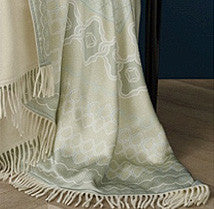 Making silk requires constant monitoring and feeding of the silkworms, and a great deal of effort results in a surprisingly small yield. These high costs of producing silk, along with global demand, make the fabric very expensive. Below is an image of a silkworm larva feeding on a mulberry leaf:
Making silk requires constant monitoring and feeding of the silkworms, and a great deal of effort results in a surprisingly small yield. These high costs of producing silk, along with global demand, make the fabric very expensive. Below is an image of a silkworm larva feeding on a mulberry leaf:
Silk has a smooth, soft texture. It is one of the strongest natural fibers, but it loses up to 20% of its strength when wet. Silk has poor elasticity and when stretched, even just a small amount, it tends to remains elongated. Silk takes dye very well and accordingly, can be made available in an array of colors.
What is a Martindale test?
The Martindale test is an international standard for determining a fabric’s wear resistance. It is used to check a fabric’s ability to withstand abrasion and pilling, as well as its suitability for various uses. It is an oscillating test in which fabrics are rubbed with an abrasive material in a circular motion. The number of cycles that the fabric can endure before showing a notable change in shade or appearance, based upon specified standards, is used to determine its rating.
The Martindale test is the method of choice in Europe and Asia and is considered to be the most true-to-life measurement of how a fabric will perform.
How does a Percale fabric differ from a Sateen fabric?
A Percale is a plain weave using a use a one-over, one-under structure.
A Sateen uses of a different structure in the weaving process, usually a four-over, one-under.
The Percale’s weave produces firm and smooth fabric with no gloss. The Sateen’s structure places more threads on the surface, producing the sheen and softer feel.

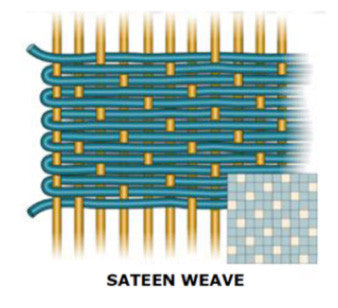
What is a QR code?
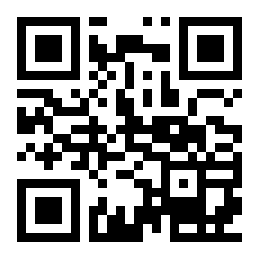 A QR code, or Quick Response code, is a type of a two-dimensional (2D) barcode. This barcode code consists of black, or solid, modules arranged in a square pattern on a white background. It is a "print-based hyperlink." It is very easy to set-up and use.
A QR code, or Quick Response code, is a type of a two-dimensional (2D) barcode. This barcode code consists of black, or solid, modules arranged in a square pattern on a white background. It is a "print-based hyperlink." It is very easy to set-up and use.
The QR code is encoded with a URL. You download and install a QR code decoding application software onto your camera-enabled mobile device (smart phone, iPad, etc.) You then fire up the app and point the camera at the QR code. The browser will automatically open and take you straight to the encoded URL.
What does fill power mean in down comforters and pillows?
Fill power is a measurement of efficiency; the higher the fill power number, the better the down and the greater the insulating value. The fill power measurement represents the number of cubic inches filled by an ounce of down.
Fill power is directly related to the size of the down cluster. Large down clusters occupy more space than smaller down clusters. The higher the fill power the larger the clusters, and thus, the more air that is trapped between the clusters. The trapped air is what gives down its insulating properties.

The size of the bird and the climate in which it lives, determines the size of its down cluster. The colder the climate, the larger the down cluster to keep the bird warm. For example, it is colder in Canada than it is in Hungary. Therefore, the birds need larger down clusters in Canada to stay warm.
What is a French knot?
 A French knot is an embroidery technique in which the yarn or thread is knotted around itself.
A French knot is an embroidery technique in which the yarn or thread is knotted around itself.
French Knot table linens feature intricately hand-embroidered French knots. As each piece is handcrafted, from the hand-embroidered knots to the hand-drawn hemstitch, no two are ever the same. The subtle differences make each piece unique – a work of art! Make sure your customer understands that each stitch is embroidered by hand on the very finest Italian fabrics, just in case she has a concern that it is “not perfect”.
What is a twill weave?
 A twill weave is a pattern of diagonal parallel ribs (in contrast with a sateen and plain weave). This is done by passing the weft thread over one or more warp threads and then under two or more warp threads and so on, with a "step" or offset between rows to create the characteristic diagonal pattern. Because of this structure, twills generally drape well.
A twill weave is a pattern of diagonal parallel ribs (in contrast with a sateen and plain weave). This is done by passing the weft thread over one or more warp threads and then under two or more warp threads and so on, with a "step" or offset between rows to create the characteristic diagonal pattern. Because of this structure, twills generally drape well.
Below is close-up very soft twill, 100% Egyptian cotton bed linens, available in duvet covers, shams, sheets and pillowcases.
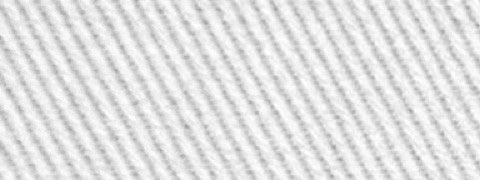
What is Eiderdown?
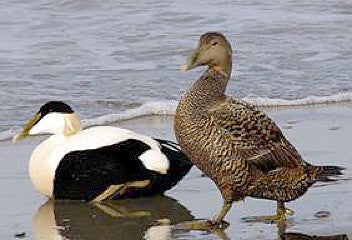 Eiderdown is down that comes from the Eider, a large sea duck that lives on the northern coasts of Europe, Asia, and North America (the male is on the left in the photo). The Eider's nest is built close to the sea and is lined with the celebrated eiderdown. This soft and warm lining has long been harvested for filling comforters and pillows. Although eiderdown comforters and pillows are now a rarity, eiderdown harvesting continues and is sustainable, as it can be done after the ducklings leave the nest with no harm to the birds. Eiderdown is exceptionally soft and has insulating properties far superior to any other down.
Eiderdown is down that comes from the Eider, a large sea duck that lives on the northern coasts of Europe, Asia, and North America (the male is on the left in the photo). The Eider's nest is built close to the sea and is lined with the celebrated eiderdown. This soft and warm lining has long been harvested for filling comforters and pillows. Although eiderdown comforters and pillows are now a rarity, eiderdown harvesting continues and is sustainable, as it can be done after the ducklings leave the nest with no harm to the birds. Eiderdown is exceptionally soft and has insulating properties far superior to any other down.
Eiderdown is such a unique plumage. Fill power cannot accurately be measured because of the way each cluster clings to the other.
Typical goose and duck down tends to sit loosely in a product and can shift and "flow." Eiderdown tends to hold together and is generally more resilient. This clingy behavior also makes it better at trapping air and, therefore, a better insulator.
Utopia by Sferra features Eiderdown, as well as a beautiful German Silk Jacquard ticking; 12” baffle box construction, piped edging, corner loops, and a corner silk. Its price reflects its rarity and difficulty in obtaining.
What is Appliqué?
Appliqué refers to a needlework technique in which one layer of fabric is placed over another layer of fabric and sewn in place. The term is French in origin and, in this context, means, "applied" or "thing that has been applied." Typically, different fabrics are selected for the appliqué to add texture, contrast and style. This shows an appliqué of Camel sateen on an Ivory percale base:

What are the Selvage, Warp and Weft in a fabric?
In the weaving process, the selvage (or selvedge) is the self-finished edge. Selvages keep the fabric from unraveling or fraying. The warp yarns are those running lengthwise or vertically, parallel to the selvage. They run the entire length of the fabric. The weft yarns are those running widthwise or horizontally, perpendicular to the selvage. They loop back at the end of each row.
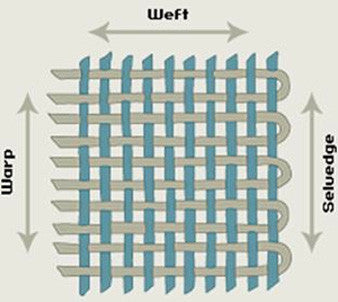
What is Hemstitch?
Hemstitch is a decorative drawn threadwork technique. A section of parallel threads are removed from the fabric and the remaining perpendicular threads are grouped together with additional thread to make small ornate holes. Despite its name, hemstitch is not limited to the edges or hems of fabric — it can be used as an ornamental stitch anywhere on the fabric.

What is Satin Stitch?
A satin stitch or damask stitch is a series of flat stitches that are used to completely cover a section of the background fabric. The stitches are laid side by side, evenly and closely together, creating a large, smooth, satiny area - hence its name. A satin stitch can be used as a decorative stitch or to affix one piece of fabric to another.

What is a Matelassé?
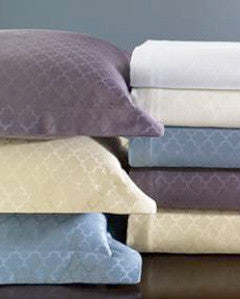 Matelassé (pronounced matt-le-say) is a French word meaning padded, lined or quilted. It is used to describe fabric that appears to be quilted, but actually has no padding within the fabric. Specialty jacquard looms are used to give a matelassé fabric a unique appearance of intricate design; raised patterns, indentations, and the padded look often associated with quilts.
Matelassé (pronounced matt-le-say) is a French word meaning padded, lined or quilted. It is used to describe fabric that appears to be quilted, but actually has no padding within the fabric. Specialty jacquard looms are used to give a matelassé fabric a unique appearance of intricate design; raised patterns, indentations, and the padded look often associated with quilts.
What is Mangle?
The original mangle or “wringer” (pictured below) was a mechanical laundry aid consisting of two rollers in a sturdy frame, connected by cogs and powered by a hand crank and was used to wring water from wet laundry.

Today, most mangles are used to press or flatten sheets and other laundry.
What is a Gingham Check pattern?
Gingham is a plain weave, yarn-dyed cotton or cotton-blend fabric. Gingham was originally woven with stripe patterns, but is also woven with checks (two colors) or plaids (three or more colors).
Weaving parallel horizontal and vertical stripes of equal widths, either in a white and color-dyed yarn, or two color-dyed yarns, creates a gingham check pattern. The crisscrossing of the two colors in the warp (lengthwise strands attached to the loom) and weft (horizontal strands that cross the warp) produces an allover pattern of solid-color, square checks. The two colors of stripes intersect to form a third color check. Think of a classic red picnic cloth or Dorothy’s blue dress in the Wizard of Oz.
Why should I use a mattress pad?
A mattress pad is designed to lie on top of a mattress. It can have an elasticized skirt that is placed over and around a mattress, similar to a bottom fitted sheet. Or anchor bands at the corners that keep it in place.
A mattress pad serves several purposes:
- It offers extra cushioning, enhancing the overall comfort of the mattress. You experience the added softness of a mattress pad, while not taking away from the support of the mattress.
- It provides an added layer of warmth between the mattress and your body. In colder weather, or in well-air conditioned rooms, a mattress pad acts as insulation and helps keep you warm.
- It acts as a buffer between the sheets and the mattress, helping protect against stains. An unprotected mattress can become stained very easily, even from natural perspiration.
- It protects the integrity of the mattress, especially the stitching along the seams. A protected mattress will have a much longer useful life.
What is napped fabric?
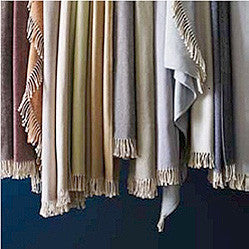 Napped fabric is created through a process that teases the fibers, raising the nap, or pile, and creating in a softer, warmer finish. After the fibers have been raised, they are brushed and/or sheared off to make them even. The raised fibers of napped fabric all lie in one direction, making the fabric look and feel different when viewed or touched from different angles. In addition, the insulating air cells in the nap provide improved thermal insulation and warmth.
Napped fabric is created through a process that teases the fibers, raising the nap, or pile, and creating in a softer, warmer finish. After the fibers have been raised, they are brushed and/or sheared off to make them even. The raised fibers of napped fabric all lie in one direction, making the fabric look and feel different when viewed or touched from different angles. In addition, the insulating air cells in the nap provide improved thermal insulation and warmth.
What is Cashmere?
Cashmere is wool obtained from the Cashmere goat. The majority of the world's Cashmere today comes from China and Mongolia, with the finest found in the Gobi Desert region of Inner Mongolia. Cashmere goats produce a double fleece. The fine, soft undercoat (or underdown) of hair is mingled and must be de-haired from the straighter and much coarser outer coating of hair (or guard hair).
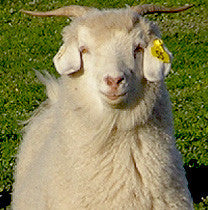 Cashmere is characterized by its fine, soft and strong fibers, which are highly adaptable and skillfully spun into yarns. This luxuriant wool provides a natural, light weight insulation with a silken feel. The resulting Cashmere fabric is highly durable and will last for years if cared for properly.
Cashmere is characterized by its fine, soft and strong fibers, which are highly adaptable and skillfully spun into yarns. This luxuriant wool provides a natural, light weight insulation with a silken feel. The resulting Cashmere fabric is highly durable and will last for years if cared for properly.
What size tablecloth do I need for my table?
It is easy to calculate the proper size of a tablecloth:
For a square or oblong table:
- Measure the length and width of the table.
- Decide on the length of the drop you prefer. The drop is the amount of fabric that hands down from the top of the table. A typical drop ranges between 10 and 12 inches. If you want your tablecloth to go to the floor, then the drop would usually be 30" (a typical table height), but measure, just in case.
- Add the amount of the drop multiplied by two to both the length and the width of the table.
For example, if the table measures 42" wide by 84" long, and you want a 12" drop, then the oblong tablecloth should measure 66" (42" width + 24" total drop) by 108" (84" length + 24" total drop).
For a round table:
- Measure the diameter of your table.
- Decide on the length of the drop.
- Add the amount of the drop, multiplied by two, to the diameter of the table.
For example, if the table measures 60" in diameter and you want it to go to the floor with a 30" drop, then the round tablecloth should measure 120" (60" diameter + 60" total drop).
Also remember to allow for shrinkage and add the appropriate amounts to your final calculations. A linen tablecloth may shrink approximately 4 to 8%. For a ring-spun polyester tablecloth, there is no shrinkage.
